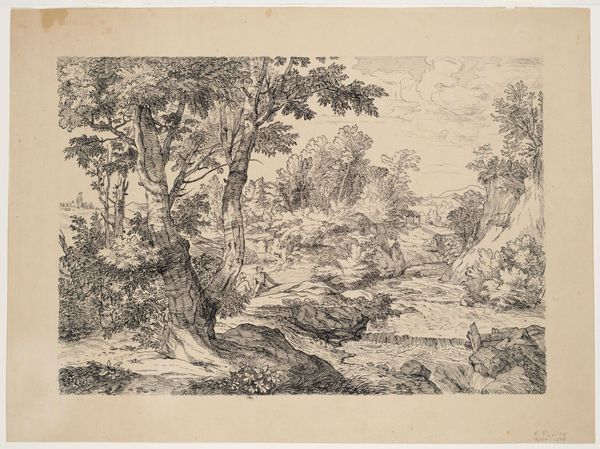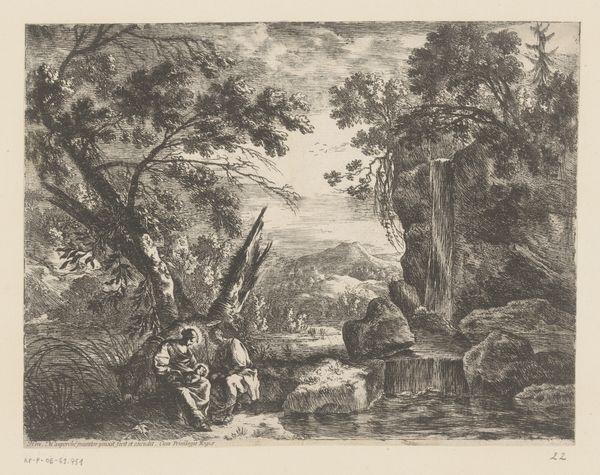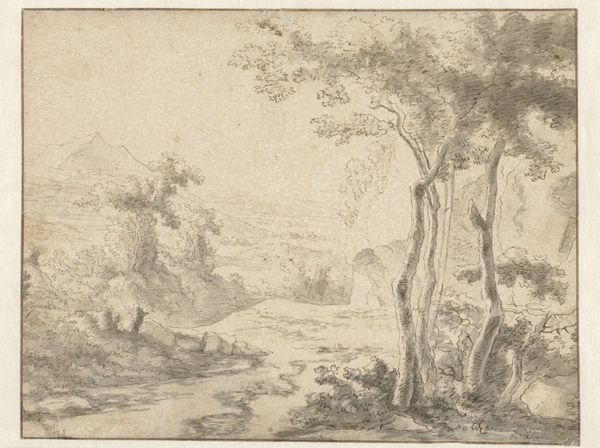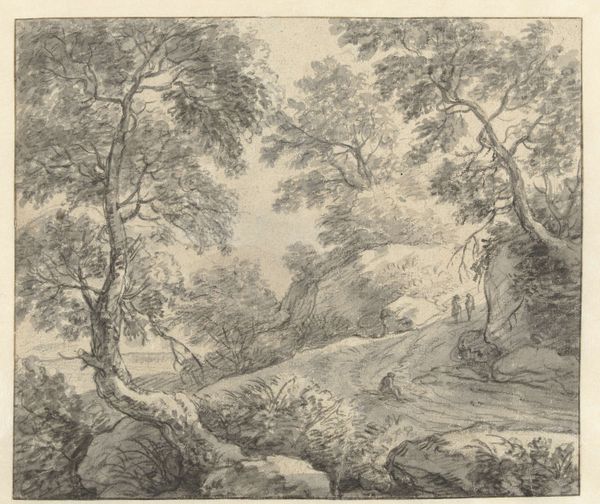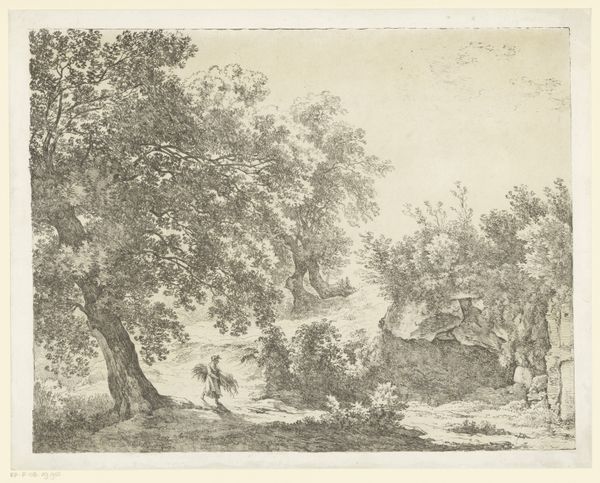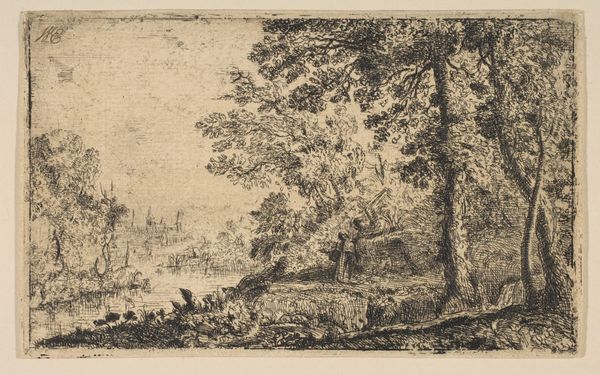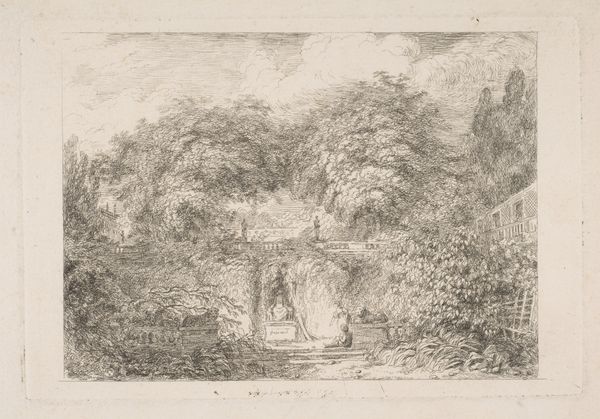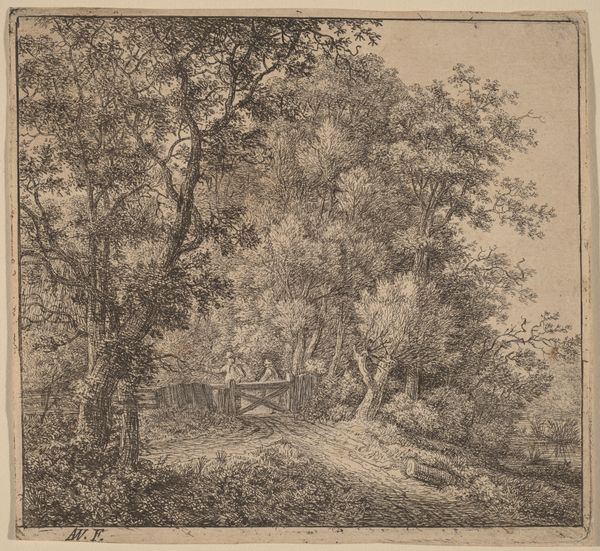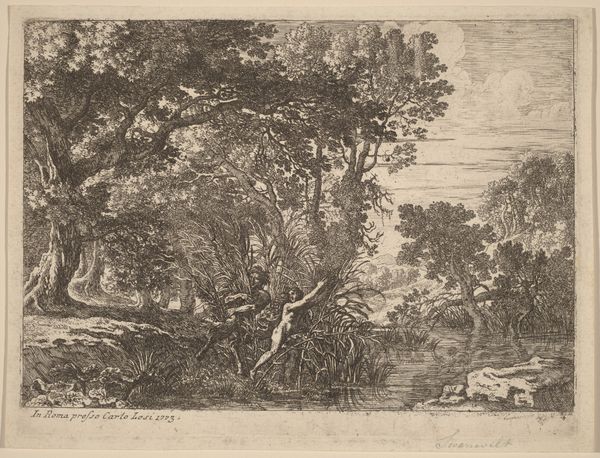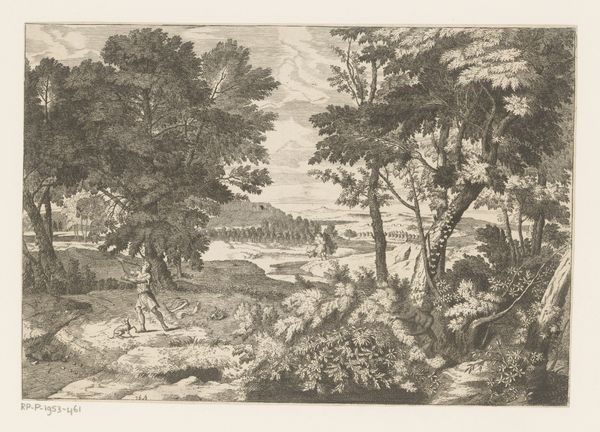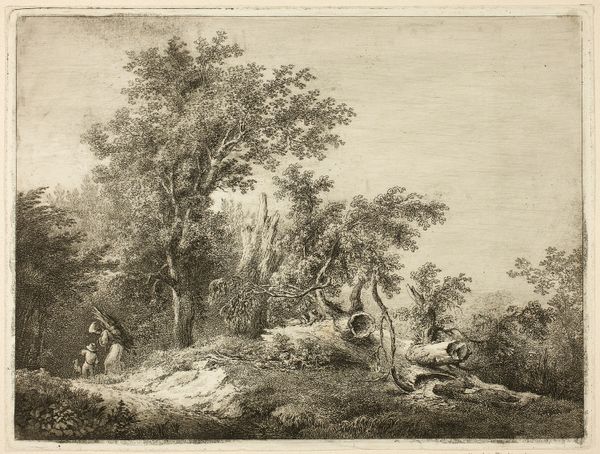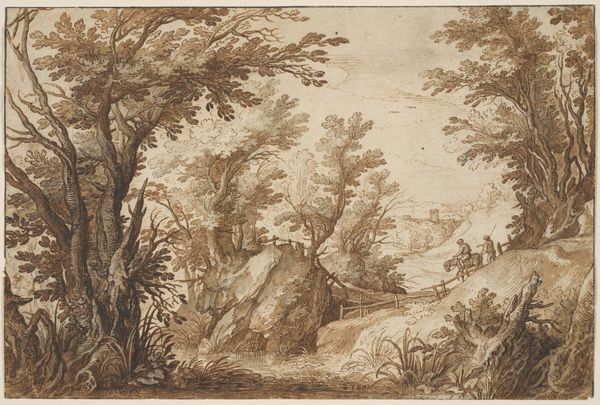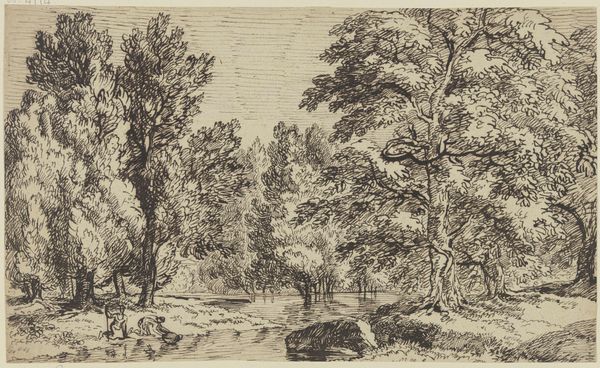
print, etching
#
pencil drawn
#
natural shape and form
#
toned paper
#
light pencil work
# print
#
etching
#
pencil sketch
#
etching
#
possibly oil pastel
#
pencil drawing
#
france
#
watercolour illustration
#
watercolor
Dimensions: 8 1/8 x 11 1/16 in. (20.64 x 28.1 cm) (sheet)
Copyright: Public Domain
Henri Mauperché created this etching, "Landscape with the Flaying of Marsyas," during the height of the Baroque period in France. The idyllic landscape is juxtaposed with a scene of brutal violence from classical mythology, one that can seem jarring to modern eyes. This contrast offers a window into the cultural values of 17th-century France. Louis XIV’s absolutist regime used art to project an image of power and refinement while simultaneously enforcing strict social hierarchies and repressing dissent. The myth of Marsyas, who dared to challenge Apollo's musical skill, served as a warning against hubris and disobedience. Royal patronage shaped the art world of the time and institutional power influenced subject matter and style. By examining period texts, court documents, and art criticism, we can better understand how artists like Mauperché negotiated these constraints, sometimes reinforcing and at other times subtly subverting the dominant ideology. Art history then becomes a means of understanding the complex interplay between artistic expression, cultural values, and political power.
Comments
minneapolisinstituteofart about 2 years ago
⋮
According to myth, Marsyas challenged Apollo to a musical contest, pitting his pipes against the god's lyre, with the stakes giving the winner the right to do as he pleasesd with the loser. Apollo won and chose to skin the presumptuous Marsyas alive. Landscape with the Flaying of Marsyas features an outcropping where a path emerges from a forest to offer a view of a river valley. At the edge of the woods, in the middle of the scene, Apollo and two other figures exact punishment on Marsyas, who has been tied to the trunk of a shattered tree. Though the small figure group is relatively calm for such a harrowing event, Henry Mauperché imparts energy to the scene through his rapid, nervous attack on the plate with his etching needle.
Join the conversation
Join millions of artists and users on Artera today and experience the ultimate creative platform.
